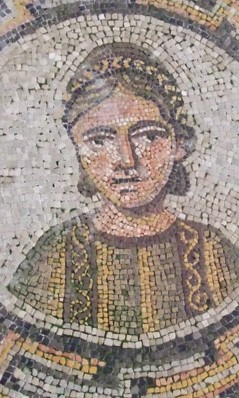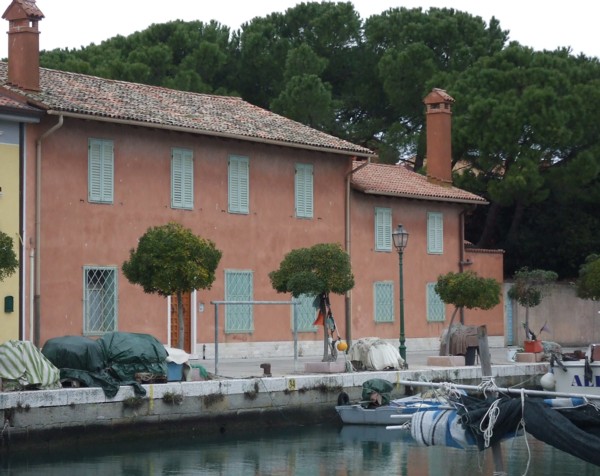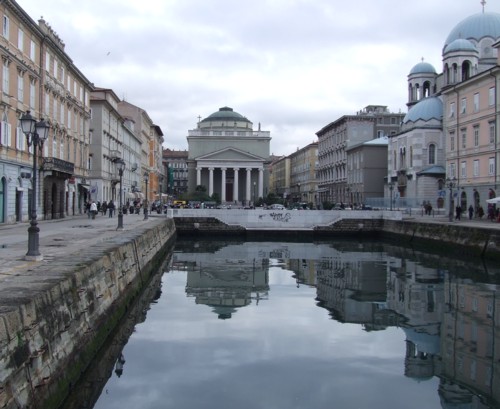About the Friuli-Venezia Giulia region
It’s not on a lot of tourist itineraries, but the Friuli-Venezia Giulia region of Italy is an interesting area with several worthy tourist destinations, and almost every possible type of landscape. The region is located in the north-east corner of Italy, bordered by Austria and Slovenia and close to Croatia. It occupies a kind of large amphitheatre between the mountains and the head of the Adriatic Sea. Friuli-Venezia Giulia has a regional airport (served by cheap flights from the UK) and can be combined with tours of the neighbouring Veneto region.
The region is unevenly divided into four sub-divisions; the provinces of Udine, Gorizia, Trieste and Pordenone. The capital of the region is the city of Trieste. Friuli-Venezia Giulia is one of the regions of Italy to have autonomous status.
Geography and history
A glance at a map of this region helps to give an insight into its complicated background. Friuli-Venezia Giulia curves around the head of the Adriatic Sea and for a big section of landlocked Europe this coastline is the nearest sea access. Austria lies just to the north, and for 500 years much of this area was under Austrian rule, with Trieste the main sea-port of the Austrian then Austro-Hungarian Empire. It was made part of Italy after the First World War. Boundaries were drawn again after the Second World War, with previously-Italian territory in Istria becoming part of Yugoslavia. Nowadays Trieste is on a thin coastal arm of Italy which reaches into Slovenia; Croatia is just a few miles beyond.

As you would imagine, the atmosphere in Friuli-Venezia Giulia is very different to other parts of Italy. Even its cities reflect the different peoples who have inhabited or ruled the region: Cividale was the seat of the Lombards, Udine is Venetian in style, while Trieste in particular is famed for its Central-European ambience. As well as Italian, languages spoken in parts of the region include German, Slovenian and Friulian (Furlan). You’ll see signs in a variety of languages, and and the area’s art, architecture and cuisine have all been strongly influenced by the area’s varied cultural background.
Friuli-Venezia Giulia extends northwards into the Julian Alps, and westwards into the Dolomites, which descend to hills and then the wide plains around the curving coastline. The region contains a good number of nature reserves; from the mountains to protected lagoon habitats and a marine reserve near Trieste. The lower hills and plains include fertile wine-producing areas, with a number of good local wines and vineyards to interest the visiting enthusiast. The coast varies from the beaches and lagoons at Lignano and Grado in the west to rocky coves in the Trieste area.
The region is on a geological faultline, and suffered a major earthquake in 1976, killing 1,000 and leaving 74,000 homeless. During reconstruction work some historic buildings and town centres were rebuilt exactly as they were, other towns were rebuilt in a modern style.
What to see

Trieste is a town echoing with its historic significance (and the subject of a great book by Jan Morris); the former sea-port of the Habsburg Empire and very un-Italian in atmosphere. Good outings from Trieste include the fishing town Muggia on the Slovenian border and the Grotta Gigante, a huge show-cave. Just along the Adriatic coast are two impressive castles by the sea, both open to the public: the Castello di Duino and the Castello Miramare, a fancy white castle with large grounds to explore. Trieste Airport is a practical gateway to the area.
Aquileia is an important archaeological destination, once a leading Roman city and now a UNESCO World Heritage Site.
Other interesting towns include Venetian-influenced Udine, the Lombard town Cividale del Friuli and San Daniele, which is famous for its cured ham as well as its attractive historic centre. Gorizia, on the border with Slovenia, was divided by a wall until 1994.
Since it includes Alps, hills, plains, lagoons and sea shore, Friuli-Venezia Giulia offers not just a range of landscapes but a whole array of holidays, from skiing to boating and sunbathing. There are a few popular beach resorts including Grado, close to Aquileia, which is on a island between a lagoon and the sea.
Friuli-Venezia Giulia travel
There is one principal airport in the region, Trieste Airport (also known as Aeroporto Friuli-Venezia Giulia), which is served by cheap Ryanair flights from the UK. A car is useful for exploring this area of Italy, but the airport is fairly well-connected by bus, and there are bus networks connecting the towns and villages in the area, with hubs at Trieste, Gorizia and Udine. A railway line runs from Trieste to Venice. Other possible airports for Friuli include Venice Marco Polo and Venice Treviso in the Veneto – from Venice or Treviso you can take the train up into Friuli-Venezia Giulia, or drive.
Itineraries
For a longer stay in summer why not base your family at seaside resort Grado, while making trips inland or along the coast to visit some of the region’s other sights?
If you’re within reach of London Stansted Airport and you fancy a touring holiday using budget airports and public transport, you could fly into Trieste Airport, spend 2 or 3 nights in Trieste (with visits to Muggia and Castello Miramare), catch the train and bus to Grado (around an hour’s travel time), spend the night in Grado and visit neighbouring Aquileia, then move on to Venice (bus and train, around two hours), flying home from Venice Treviso Airport.
> About Trieste
> Book a hotel in Friuli-Venezia Giulia
On this site
Useful external links
